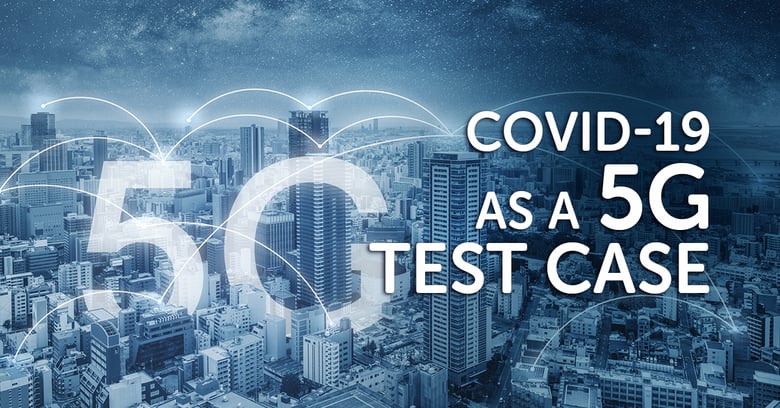Last week, we discussed the “day after” the COVID-19 crisis. Now let’s see if the current crisis can teach us anything about the opportunities and challenges of 5G services and networks. After all, it was just a couple of months ago that 5G seemed like the “next big thing” of 2020 (see “20 Words for 2020 Networks” – I guess the joke is on me 😊).
When we look at how a lot us live these days, it’s clear that this new way of living is about doing things remotely. We work from home remotely, socially engage remotely, consume (lots and lots of) content remotely, learn (and teach) remotely, and even engage with our doctors remotely (for all issues, not necessarily related to COVID-19).
All of these affect networking infrastructure, and will continue to affect it long after this crisis is over.
So here are my questions: Are the network challenges raised by this pandemic similar in any way to the ones we expect when commercially deploying 5G? If so, could we look at today’s crisis as a test case for 5G? Would our lives have looked any differently had 5G networks already been widely deployed today?
In the “Unlock Your 5G Potential with Flexible Wireless Hauling” white paper, we discuss the main network challenges that operators face when deploying 5G networks:
- More capacity
- More sites
- Low latency
- Service orchestration
Surprisingly enough, all four challenges seem very relevant to the current networking-during-pandemic scenario.
- More capacity: The rise in usage of remote tools, and specifically of online video conferencing, creates a huge increase in the demand for network capacity. This is derived from our remote-X lifestyle these days, where video is used for many types of “X”: learning, working, socializing, health, etc.
- More sites: In the 5G context, this is a challenge that derives from the wider distribution of subscribers and from the need to get closer to them using wider channels, hence higher spectrum (with poorer propagation). This is not the case today, but one might say that the current need to get better (i.e. higher capacity) broadband to more people in more places (e.g. remote villages and other underserved areas) is equivalent to what drives 5G to deploy more sites.
- Low latency: There is a huge difference between watching Netflix and running a Zoom conference call. While Netflix uses buffering to ensure a smooth experience, two-way (or more) video calls require very low latency, otherwise they look like “nodding sessions” seen when TV correspondents are interviewed via satellite connections. That being said, the need for lower latency in 5G networks has to do more with URLLC applications, such as tactile internet (e.g. remote surgery), and new network architecture models (e.g. midhaul and fronthaul), which lead us to the last challenge…
- Service orchestration: This challenge, which usually leads to network slicing, is extremely relevant today. For instance, let’s take three video calls that compete over limited network infrastructure resources: a chat between two friends; a business conference call; and a remote-health session between a patient and a doctor. In a sliced network environment, those calls would be provisioned to different network slices, ensuring the e-health and business sessions would not be interrupted by the social chat. This is a simplified example of how current applications raise the need for efficient service orchestration and network slicing.
The bottom line is that there are lots of similarities between current networking needs and the ones forecasted for 5G. Had the virus outbreak occurred when 5G networks were fully deployed, we probably would have been better off (at least from the connectivity perspective).
This also means that the current outbreak can indeed act as a network staging (or a network aging) exercise for what is coming in the age of 5G.
To learn more about unlocking your 5G potential, download our white paper.


